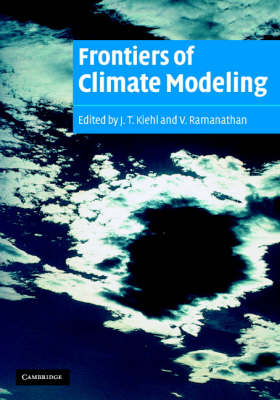
Frontiers of Climate Modeling
Cambridge University Press (Verlag)
978-0-521-79132-8 (ISBN)
- Keine Verlagsinformationen verfügbar
- Artikel merken
The physics and dynamics of the atmosphere and atmosphere-ocean interactions provide the foundation of modern climate models, upon which our understanding of the chemistry and biology of ocean and land surface processes are built. Originally published in 2006, Frontiers of Climate Modeling captures developments in modeling the atmosphere, and their implications for our understanding of climate change, whether due to natural or anthropogenic causes. Emphasis is on elucidating how greenhouse gases and aerosols are altering the radiative forcing of the climate system and the sensitivity of the system to such perturbations. An expert team of authors address key aspects of the atmospheric greenhouse effect, clouds, aerosols, atmospheric radiative transfer, deep convection dynamics, large scale ocean dynamics, stratosphere-troposphere interactions, and coupled ocean-atmosphere model development. The book is an important reference for researchers and advanced students interested in the forces driving the climate system and how they are modeled by climate scientists.
Jeffrey Kiehl is a senior scientist at the National Center for Atmospheric Research, Boulder, Colorado. He is a recipient of the Disinguished Achievement Award in Climate System Modeling. V. (Ram) Ramanathan is Professor of Atmospheric Sciences at Scripps Institution of Oceanography, La Jolla, California. He is the recipient of several prestigious prizes awarded for his work in the field.
Preface; 1. Overview of climate modeling J. T. Kiehl; 2. Climate change modeling: a brief history of the theory and recent 21st century ensemble simulations W. M. Washington, A. Dai and G. A. Meehl; 3. Energy balance climate models G. R. North and M. J. Stevens; 4. Intrinsic climate variability: modes and mechanisms of oceanic and atmospheric fluid dynamics J.C. McWilliams; 5. The radiative forcing due to clouds and water vapor V. Ramanathan and A. Inamdar; 6. A model study of the effect of Pinatubo volcanic aerosols on stratospheric temperatures V. Ramaswmay, S. Ramachandran, G. Stenchikov and A. Robock; 7. Unresolved issues in atmospheric solar absorption W. D. Collins; 8. Cloud feedbacks D. A. Randall, M. E. Schlesinger, V. Galin, V. Meleshko, J.-J. Morcette and R. Wetherald; 9. Water vapor feedback D. Rind; 10. Water vapor observations B. J. Soden; 11. New frontiers in remote sensing of aerosols and their radiative forcing of climate Y. J. Kaufman, L. A. Remer and D. Tanré; 12. Cloud-climate feedback: lessons learned from two El Niño events M. Zhang; 13. Runaway greenhouses and runaway glaciations: how stable is Earth's climate? J. F. Kasting.
| Erscheint lt. Verlag | 24.8.2006 |
|---|---|
| Verlagsort | Cambridge |
| Sprache | englisch |
| Maße | 178 x 255 mm |
| Gewicht | 942 g |
| Themenwelt | Informatik ► Grafik / Design ► Digitale Bildverarbeitung |
| Naturwissenschaften ► Geowissenschaften ► Meteorologie / Klimatologie | |
| ISBN-10 | 0-521-79132-4 / 0521791324 |
| ISBN-13 | 978-0-521-79132-8 / 9780521791328 |
| Zustand | Neuware |
| Haben Sie eine Frage zum Produkt? |
aus dem Bereich


